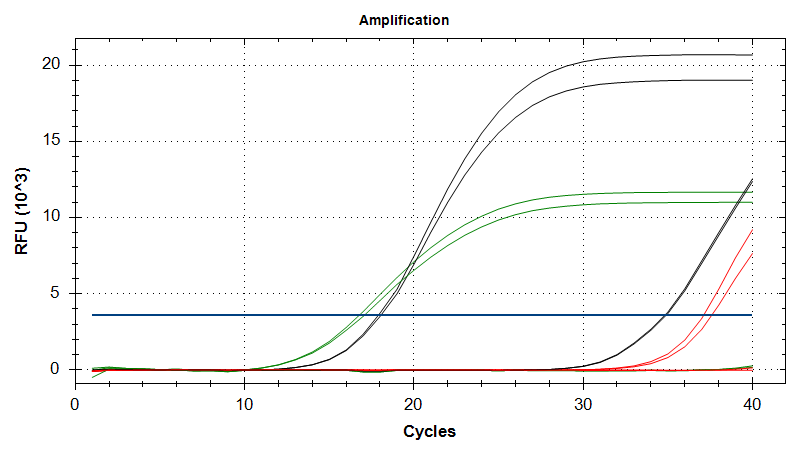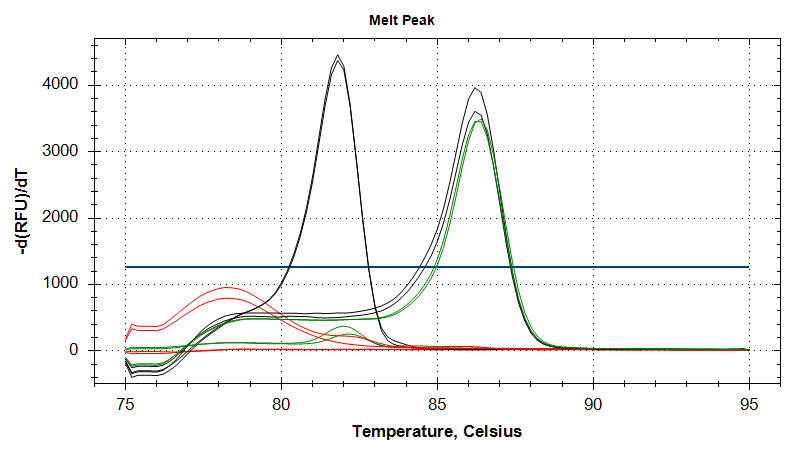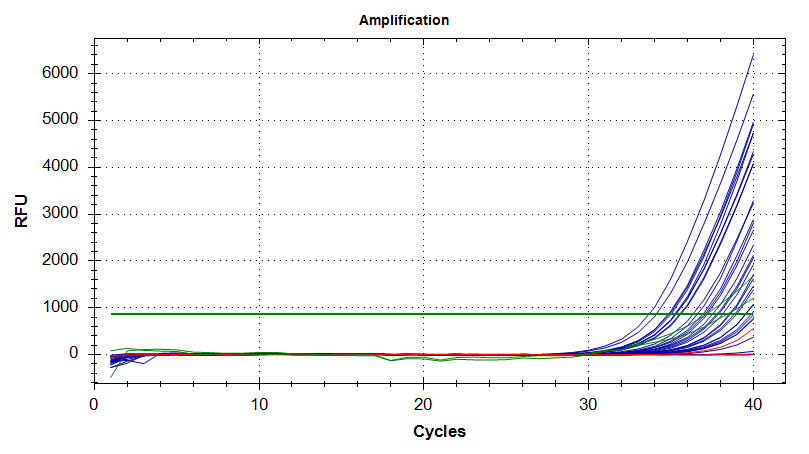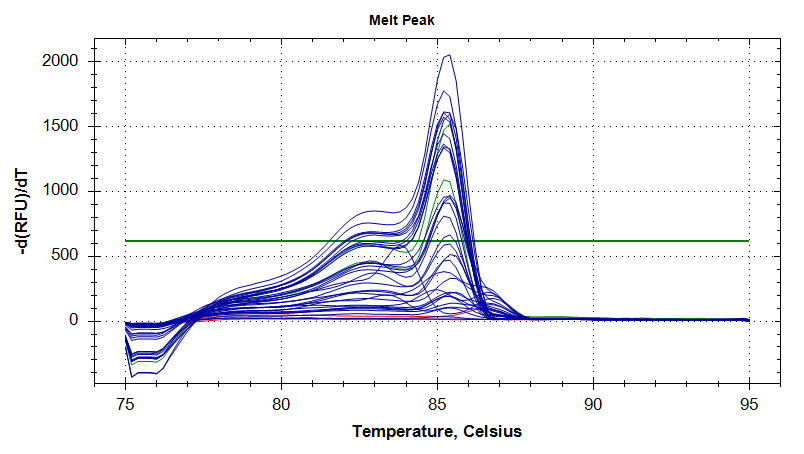The [qPCR I ran earlier today to check for residual gDNA in Ronit's DNased RNA] turned out terribly, due to a combination of bad primers and, possibly, bad gDNA.
I tracked down some different primers for testing:
- Cg_18s_1644_F (SRID 1168)
- Cg_18s_1750_R (SRID 1169)
- EF1_qPCR_5′ (SRID 309)
- EF1_qPCR_3′ (SRID 310)
In addition to BB15 from 20090519, I decided to test out BB16 from 20090519 as a positive control.
Samples were run on Roberts Lab CFX Connect (BioRad). All samples were run in duplicate. See qPCR Report (Results section) for plate layout, cycling params, etc.
qPCR master mix calcs (Google Sheet):
Results
qPCR Report (PDF):
qPCR File (PCRD):
qPCR Data (CSV):
Looks like the elongation factor (EF1) primers and BB16 gDNA as a positive control are the way to go.
In the plots below, the black lines are BB16, the green lines are BB15, and the red lines are no template controls (NTC).
The amplification plots show that the EF1 primers do not amplify with BB15, but do amplify with BB16 (black lines Cq ~34). The 18s primers amplify with both BB15 & BB16 (Cq ~16 & ~18, respecitively), but produce primer dimers (red lines in amplification and melt curve plots).
Amplification Plots

Melt Curves


